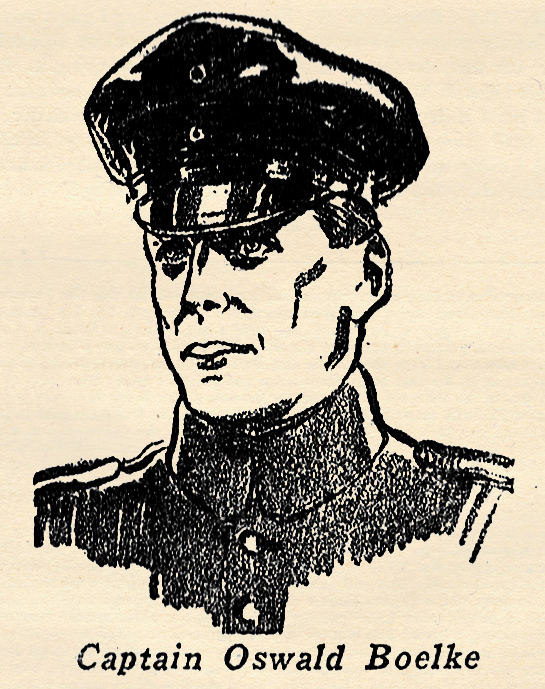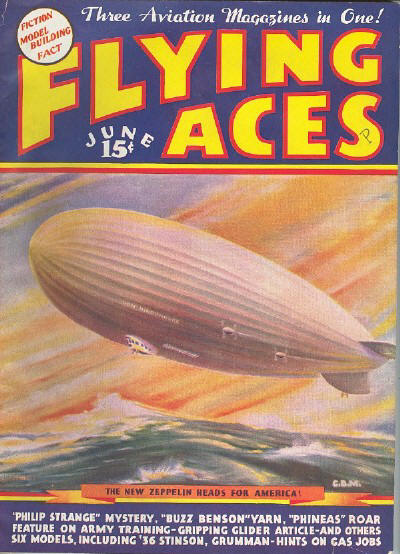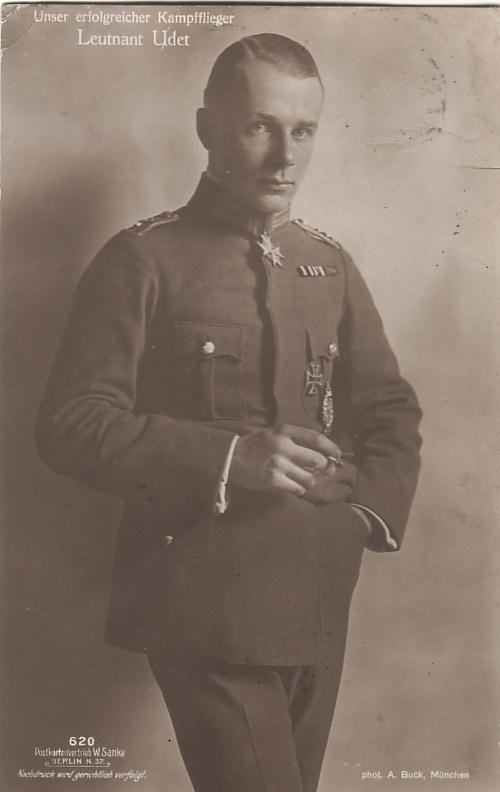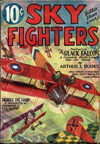Amidst all the great pulp thrills and features in Sky Fighters, they ran a true story feature collected by Ace Williams wherein famous War Aces would tell actual true accounts of thrilling moments in their fighting lives! This time it’s one of Germany’s greatest air fighters—Captain Oswald Boelke!
All the heroes  of the flying forces were not on the Allied side. The enemy also had its heroic figures.
of the flying forces were not on the Allied side. The enemy also had its heroic figures.
Captain Boelke was among the greatest of the enemy air fighters. He reigned supreme until his death; then Baron von Richtofen came along to carry on where Boelke left off.
The German air fighting tactics varied somewhat from those of the Allies, tending more towards mass attack, emulating in that respect the German system of arms to attack in force with superior number, For that reason accounts of German air fights are not usually as spectacular or glamorous as accounts of Allied fights. Boelke’s account of his fight with a dead pilot, however, borders on the realms of fiction, and could hardly he believed if it did not come from such a practical-minded, stolid figure as was the German flying Captain.
THE PHANTOM PILOT
by Captain Oswald Boelke • Sky Fighters, November 1933
ON THE 27th of September (1916) I attacked with my patrol a flight of six English single-seaters. I knocked down one of them, and immediately picked on another. But as I whirled into the second attack, the first machine, whose pilot I thought I had killed, having seen my tracer stream right into his face, made for me. I tried to escape the charge, but nothing I did seemed to avail. The enemy plane glued right on my tail. I was very much surprised at his tenacity.
After all, I was certain that I had killed the English pilot minutes before, yet here he was, still flying around in a circle stubbornly. The fact was mysterious indeed. I flew over very close to the enemy machine to investigate, and saw that the pilot was prostrate over the gunwales of his cockpit. He certainly seemed dead.
Sure, then, that the plane could do me no harm, I left it and banked off, to tackle another Englishman whom my comrades had rounded up for me. I got him without difficulty, sending him down in a slow spin.
Then the mysterious plane with the dead pilot at the controls veered around and headed toward me.
And what a strange thing! It crept up to within fifty meters of my plane. Next thing I knew, a stream of tracer spewed from its nose. The bullets rattled through my fuselage. I nosed down to escape the slugs. The plane shot overhead, so I banked around and slid down after the spinning Englishman. When the Englishman crashed in a shell crater, the other plane seemed suddenly to straighten out and scoot for its own lines.
I followed and watched, saw it land easily in an open space behind its own lines. When it stopped rolling, soldiers from the trenches came out and pulled the pilot from the pit. They laid him out on the ground and covered him with a blanket, face and all. One of the soldiers crossed himself. I knew then my own conclusions were confirmed. The pilot was really dead. But the way that plane maneuvered with a dead hand on the control stick was positively uncanny.
It had me in a cold sweat. I finally figured out that the plane was rigged so perfectly that it really flew itself.
That it seemed to tail me was pure coincidence. As for the slugs that poured from its nose, they were merely the result of a last convulsive muscular movement of the dying pilot. But I tell you, one experience like that is enough! I would rather fight ten daring, darting Englishmen all at once, than do solitary battle with a ghost plane with dead hands at the controls.
 You heard right! That marvel from Boonetown, Iowa is back and this time Phineas goes in for hypnotism!
You heard right! That marvel from Boonetown, Iowa is back and this time Phineas goes in for hypnotism!





 of the flying forces were not on the Allied side. The enemy also had its heroic figures.
of the flying forces were not on the Allied side. The enemy also had its heroic figures.


